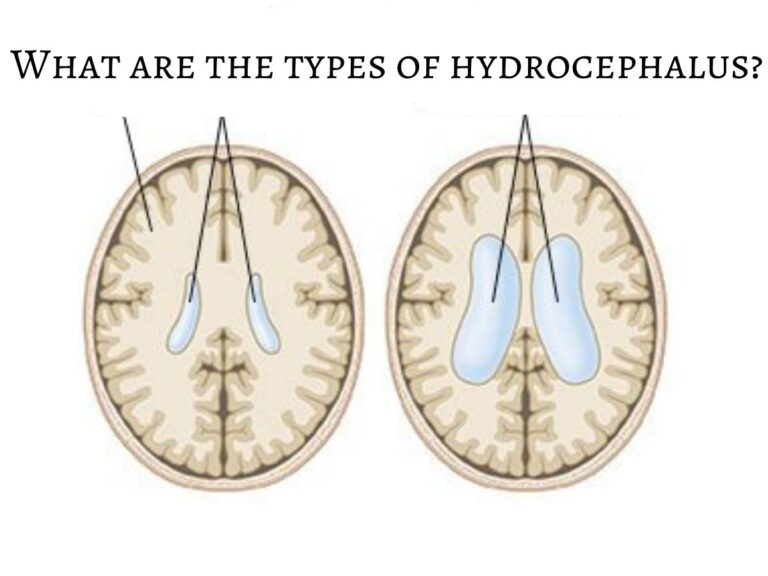
A condition is known as hydrocephalus results in an accumulation of extra cerebrospinal fluid (CSF) in the brain. This fluid fills the ventricles, which are open cavities deep into the brain and surround and cushion the brain. The fluid that accumulates in the brain ventricles as a result of hydrocephalus makes them expand. Here, we go into further detail on hydrocephalus. Surgery is the solely available therapy for the majority of hydrocephalus conditions.
Today we will discuss types of hydrocephalus according to the Top Neurosurgeon doctor in Noida/Greater Noida, Dr. Hompriya Issar.
What is Hydrocephalus.
The abnormal collection of fluid in your brain is known as hydrocephalus. The Greek terms “hydro,” which means water, and “cephalus,” which means head, are the origin of the term “hydrocephalus.” Water on the brain was previously a term used to describe hydrocephalus. Cerebrospinal fluid (CSF), a clear, colourless fluid that surrounds your brain and spinal cord, is what the “water” truly is.
Your brain’s ventricles are where CSF typically circulates. Your brain gets its nutrients and wastes out of it through CSF. Your brain and spinal cord are covered in CSF, which shields and cushions them from harm. After then, CSF is reabsorbed into your circulation.
The quantity of CSF that your body normally creates and reabsorbs each day is equal.
However, a buildup of CSF may occur if the usual flow or absorption of CSF is obstructed. The ventricles grow when the CSF accumulates in them. Your head’s pressure rises as a result of this. Too much CSF might put pressure on your brain and prevent it from working correctly.
What varieties of hydrocephalus are there?
Communication-related hydrocephalus, non-communicating hydrocephalus, normal pressure hydrocephalus, and hydrocephalus ex-vacuo are the four basic kinds of hydrocephalus.
Communicating hydrocephalus: When the flow of CSF is obstructed after it exits your ventricles, communicating hydrocephalus develops. This specific kind of hydrocephalus may be brought on by an arachnoid membrane thickening at the base of your brain. This obstruction stops the CSF from flowing freely. Because your ventricles are still open and the CSF may still flow between them, this kind of hydrocephalus is known as communicative hydrocephalus.
Non-communicating hydrocephalus: Obstructive hydrocephalus is another name for non-communicating hydrocephalus. Non-communicating hydrocephalus develops when one or more of the tiny channels that link your ventricles are blocked from CSF flow.
Normal pressure hydrocephalus (NPH): When CSF accumulation causes your ventricles to grow but there is little to no increase in pressure, it results in normal pressure hydrocephalus (NPH). NPH differs from other kinds of hydrocephalus in that, despite a higher-than-normal CSF level, the pressure inside your ventricles does not change. Your ventricles progressively accumulate CSF, and symptoms gradually appear. NPH most frequently affects older people.
Hydrocephalus ex-vacuo: Injuries to the head or stroke-related brain damage result in hydrocephalus ex-vacuo. Your ventricles’ surrounding brain tissue shrinks in these situations. Your ventricles fill with CSF to make up the empty space. Although your ventricles are bigger, your head’s pressure normally stays the same.
Why does hydrocephalus occur?
Numerous factors can contribute to hydrocephalus development. Congenital or acquired hydrocephalus are both possible.
Congenital hydrocephalus is brought on by a mix of genetic and environmental factors during fetal development. Congenital means present from conception. Congenital hydrocephalus has the following most typical causes:
- Spina bifida and associated (neural tube) abnormalities of the brain and spinal cord.
- A constriction of the little opening that connects your brain’s third and fourth ventricles (aqueductal stenosis).
- Premature birth complications, including ventricular hemorrhage.
- Infections that can inflame the tissue of the fetal brain during pregnancy, such as rubella.
Any time after birth, acquired hydrocephalus can manifest itself and have an impact on people of all ages. the following are the main contributors to acquired hydrocephalus:
- Brain injury.
- Stroke.
- Malignancies in the brain or spinal cord
- Brain or spinal cord infection, such as meningitis.
- Additionally, bleeding or post-operative problems might result in hydrocephalus with normal pressure. Without any apparent reason, NPH affects a lot of people.
If you want to know more or have any queries, and seeking a neurosurgeon consultant in Noida or Greater Noida, Contact Dr. Hompriya Issar Today.